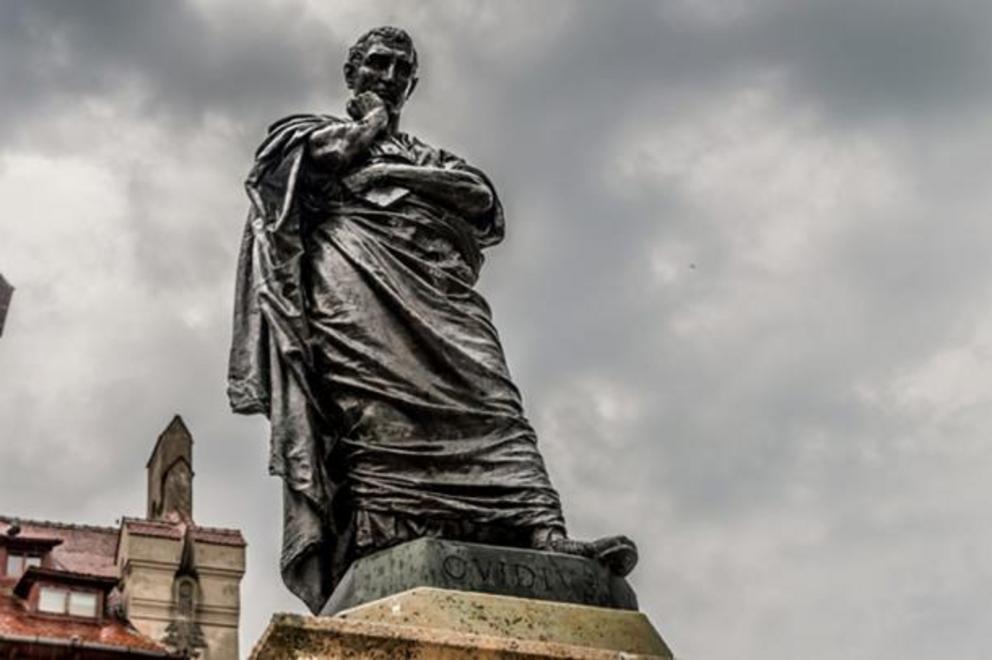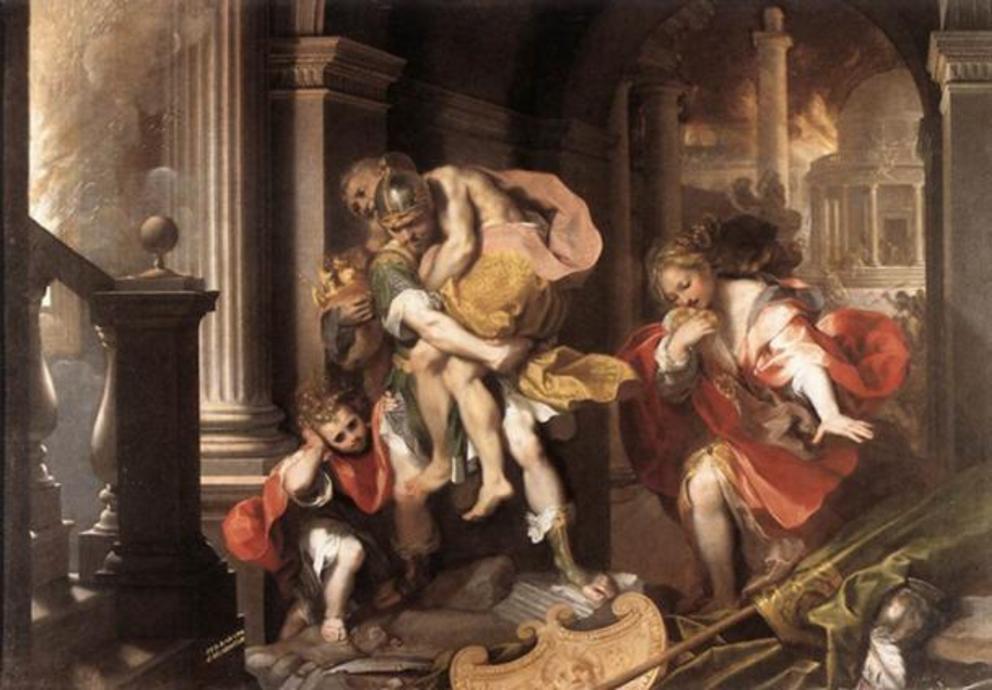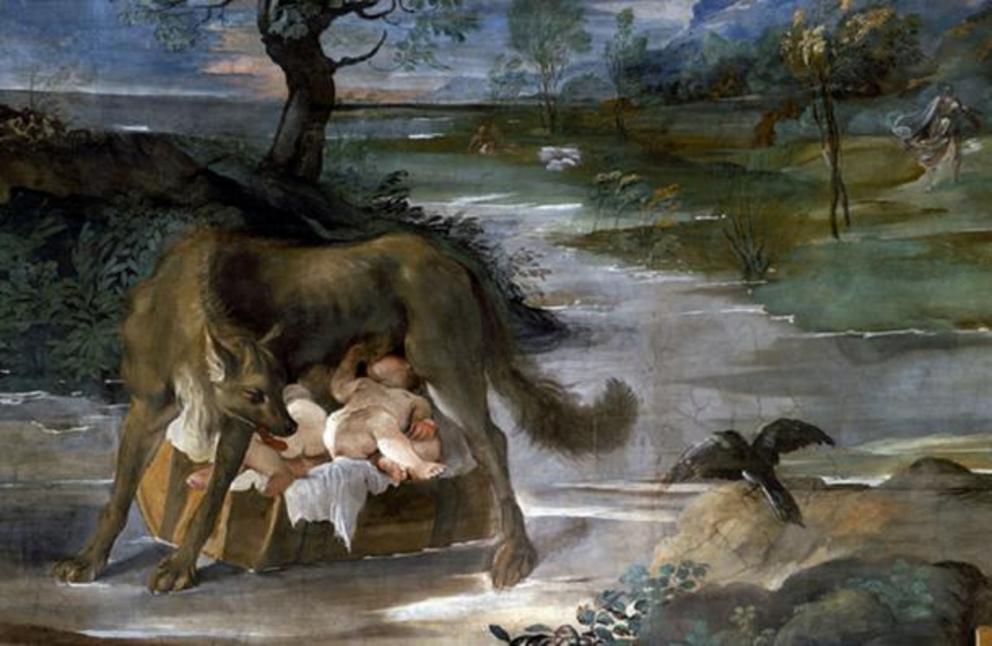Roman mythology of the ages of man
...metamorphoses and the founding of Rome
The Romans possessed a rich mythology that exerted (and continues to exert) a significant influence on Western culture. Many Roman myths, specifically those concerning the gods, have their equivalent in the Greek myths. Nevertheless, Roman mythology also contained tales unique to this civilization, most notably the myths concerning the founding of Rome. The mythology of Rome has survived till the present day not only in the works of the ancient writers, but also in numerous pieces of artwork from the Roman period.
The Importance of Ovid’s Metamorphoses to Understanding Roman Mythology
One of the most important sources of Roman mythology is Ovid’s Metamorphoses. This narrative poem was composed during the reign of Augustus and is considered to be one of the most influential works of literature in Western civilization. In addition, the myths in this work, which number at over 250, are regarded to be the canonical version of the Greek myths. In spite of its diversity, the myths in Ovid’s Metamorphoses are unified by an important theme – the changing of things from one form to another, which is highly relevant to the time he was living in, i.e. the changing of the Roman Republic to the Roman Empire.

The Golden Age by Lucas Cranach the Elder ( Public Domain )
Ovid’s Metamorphoses chronicles the history of the world from its creation to the time of Julius Caesar and contains numerous myths that mirror those of the Greeks. As an example, in the First Book, Ovid retells the myth of the Ages of Mankind, which is found also in Hesiod’s Works and Days . While the Greek version of the myth states that there were five ages, the Roman one provides four – the Golden Age, the Silver Age, the Bronze Age, and the Iron Age. In this myth, Ovid shows the deterioration that accompanied each age.

Statue of Ovidius (Ovid) in the historic center of Constanta, Romania ( BalconDelMundo / CC BY-SA 2.0 )
The Roman Stories Mirror Greek Stories
Another famous Greek story found in Ovid’s Metamorphoses is that of the Trojan War, as found in Homer’s Iliad. The Roman version of the myth, however, continues with the journey of Aeneas one of the survivors of Troy and an important figure in the foundation legend of Rome. The story of Aeneas is found also in other sources, including Virgil’s epic poem, the Aeneid, as well as Livy’s History of Rome and Cassius Dio’s Roman History both of which are considered to be historical sources.
According to the myth, Aeneas was one of the few Trojans who managed to escape from the Greeks after the fall of Troy. Aeneas and his followers traveled around the Mediterranean finally arriving in the Italian Peninsula. War breaks out between the Trojan newcomers and the Latin natives, with the former emerging victorious. Aeneas is believed to have become a god, as he vanished from the earth and his son, Ascanius, succeeds him as ruler. The Romans believe that Ascanius established the city of Alba Longa.

The founding of Rome - Aeneas flees burning Troy. (Web Gallery of Art / Public Domain )
Who Were the Founders of Rome?
Although neither Aeneas nor Ascanius founded Rome per se , the Romans regarded them to be the ancestors of Romulus and Remus the two other central figures in Rome’s foundation myth. Romulus and Remus were the offspring of Rhea Silvia, a Vestal Virgin, and the god Mars. Their mother’s uncle Amulius was the king of Alba Longa at that time, having overthrown the old king Numitor who was his brother and the father of Rhea Silvia. Amulius saw the twins as a threat to his power and therefore tried to kill them by leaving them to die on the banks of the Tiber River.

She-Wolf Suckling Romulus and Remus by Ludovico Carracci ( Public Domain )
Tiberinus the god of the river, however, rescued them and the twins were suckled by a she-wolf. The twins were later adopted by the shepherd Faustulus and grew up without knowledge of their true identities. Eventually, they learned of their royal descend and helped their grandfather regain the throne of Alba Longa. The twins then set out to find a city of their own. A dispute rose between Romulus and Remus regarding the site on which the new city was to be built. Romulus favored the Palatine Hill above the Lupercal, the site where they were suckled by the she-wolf, whereas Remus preferred the Aventine Hill.
In order to resolve their conflict, the twins resorted to divine augury. Each of them stood on their preferred hill, prepared a sacred space and observed signs in the form of vultures or eagles. Remus claimed to have seen six birds, while Romulus 12. Romulus claimed victory and the new city began to be built on the Palatine Hill. Nevertheless, Remus was dissatisfied causing trouble for his brother thereby getting himself killed.
The majority of the myths that follow revolve around the kings who succeeded Romulus , as well as figures from the subsequent Roman Republic. Examples of these myths include events such as the Rape of the Sabine Women and the arrival of Cybele in Rome, as well as figures such as Numa Pompilius and Gaius Marcius Coriolanus.

The " Capitoline Brutus", who led the revolt against Rome's last king and was a founder of the Republic. (Jastrow / Public Domain )

Roman mythology from Ovid’s Metamorphoses – Diana and Actaeon by Giuseppe Cesari Source: Public Domain
For full references please use source link below.
